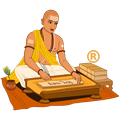 Drik Panchang
Drik Panchang



 Drik Panchang
Drik Panchang















Sunrise06:52
Sunset18:28
Moonrise09:39
Moonset20:26
Shaka Samvat1935 Vijaya
Vikram Samvat2070 Parabhava
Gujarati Samvat2069 Krodhi
Amanta MonthAshwina
Purnimanta MonthAshwina
WeekdaySomawara
PakshaShukla Paksha
TithiTritiya upto 13:29
NakshatraVishakha upto 00:53, Oct 08
YogaVishkambha upto 07:01
YogaPriti upto 04:23, Oct 08
KaranaGaraja upto 13:29
KaranaVanija upto 00:33, Oct 08
Pravishte/Gate22
Rahu Kalam08:19 to 09:46
Gulikai Kalam14:07 to 15:34
Yamaganda11:13 to 12:40
Abhijit12:17 to 13:03
Dur Muhurtam13:03 to 13:50
Dur Muhurtam15:22 to 16:09
Amrit Kalam16:29 to 18:01
Varjyam07:19 to 08:51
Varjyam04:41, Oct 08 to 06:12, Oct 08
Notes: All timings are represented in 24-hour notation in local time of Lancaster, United States with DST adjustment (if applicable).
Hours which are past midnight are suffixed with next day date. In Panchang day starts and ends with sunrise.


 Karka
Karka Pushya 22:17
Pushya 22:17

 Simha
Simha P Phalguni 26:56+
P Phalguni 26:56+

 Simha 09:06
Simha 09:06 U Phalguni 27:22+
U Phalguni 27:22+

 Kanya
Kanya Hasta 27:18+
Hasta 27:18+

 Tula 19:11
Tula 19:11 Vishakha 24:53+
Vishakha 24:53+

 Vrishchika 22:14
Vrishchika 22:14 Jyeshtha 22:14
Jyeshtha 22:14

 Meena 13:31
Meena 13:31 Revati 13:31
Revati 13:31

 Mesha 21:45
Mesha 21:45 Bharani 15:22
Bharani 15:22

 Vrishabha
Vrishabha Rohini 19:23
Rohini 19:23

 Vrishabha 08:40
Vrishabha 08:40 Mrigashira 22:03
Mrigashira 22:03

 Mithuna
Mithuna Ardra 24:58+
Ardra 24:58+

 Mithuna 21:11
Mithuna 21:11 Punarvasu 27:55+
Punarvasu 27:55+

 Karka
Karka Ashlesha
Ashlesha

 Karka 09:08
Karka 09:08 Ashlesha 09:08
Ashlesha 09:08

 Simha
Simha Magha 11:00
Magha 11:00

 Tula
Tula Chitra 11:50
Chitra 11:50In Hindu Calendar, the day starts with local sunrise and ends with next day local sunrise. As sunrise time is different for all cities, Hindu Calendar made for one city is not valid for any other city. Hence it is important to use location based Hindu Calendar, like this website. Further, each Hindu day consists of five elements, which are called angas. These five elements are -
In Hindu Calendar, all five elements together are called Panchang. (In Sanskrit: Panchang = Pancha (five) + Ang (part)). Hence Hindu Calendar which shows all five elements for each day is called Panchang. In South India Panchang is known as Panchangam.
When Hindu Calendar includes Muslims, Sikh, Christian, Buddhist and Jain festivals, including national holidays, it is called as Indian Calendar.